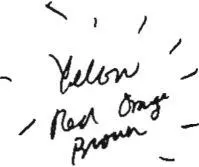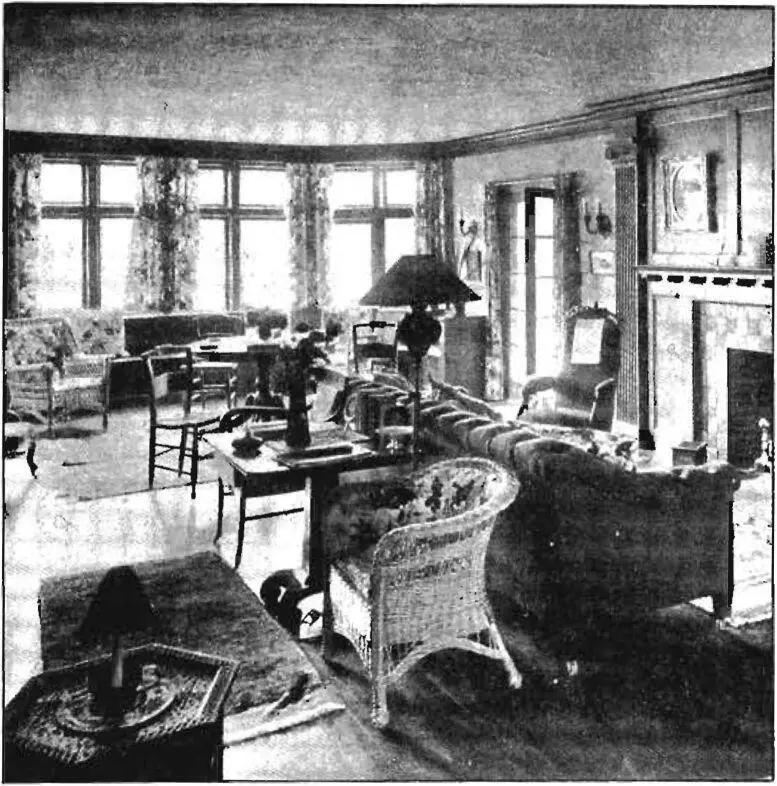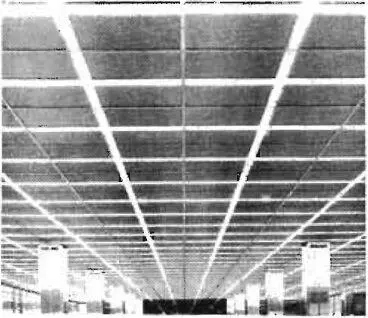Christopher alexander - A pattern language
Здесь есть возможность читать онлайн «Christopher alexander - A pattern language» весь текст электронной книги совершенно бесплатно (целиком полную версию без сокращений). В некоторых случаях можно слушать аудио, скачать через торрент в формате fb2 и присутствует краткое содержание. Жанр: Прочая научная литература, на английском языке. Описание произведения, (предисловие) а так же отзывы посетителей доступны на портале библиотеки ЛибКат.
- Название:A pattern language
- Автор:
- Жанр:
- Год:неизвестен
- ISBN:нет данных
- Рейтинг книги:3 / 5. Голосов: 1
-
Избранное:Добавить в избранное
- Отзывы:
-
Ваша оценка:
- 60
- 1
- 2
- 3
- 4
- 5
A pattern language: краткое содержание, описание и аннотация
Предлагаем к чтению аннотацию, описание, краткое содержание или предисловие (зависит от того, что написал сам автор книги «A pattern language»). Если вы не нашли необходимую информацию о книге — напишите в комментариях, мы постараемся отыскать её.
A pattern language — читать онлайн бесплатно полную книгу (весь текст) целиком
Ниже представлен текст книги, разбитый по страницам. Система сохранения места последней прочитанной страницы, позволяет с удобством читать онлайн бесплатно книгу «A pattern language», без необходимости каждый раз заново искать на чём Вы остановились. Поставьте закладку, и сможете в любой момент перейти на страницу, на которой закончили чтение.
Интервал:
Закладка:
And what it means in practical terms is that, if you
. . . the mosaic of subcultures (8) and its individual subcultures, whether they are communities of 7000 (12) or identifiable neighborhoods (14), need to be completed by boundaries. In fact, the mere creation of the boundary areas, according to this pattern, will begin to give life to the subcultures between the boundaries, by giving them a chance to be themselves.
«£« *£»
The mosaic of subcultures requires that hundreds of different cultures live, in their own way, at full intensity, next door to one another. But subcultures have their own ecology. They can only live at full intensity, unhampered by their neighbors, if they are physically separated by physical boundaries.
In mosaic of subcultures (8) we have argued that a great variety of subcultures in a city is not a racist pattern which forms ghettos, but a pattern of opportunity which allows a city to contain a multitude of different ways of life with the greatest possible intensity.
But this mosaic will only come into being if the various subcultures are insulated from one another, at least enough so that no one of them can oppress, or subdue, the life style of its neighbors, nor, in return, feel oppressed or subdued. As we shall see, this requires that adjacent subcultures are separated by swaths of open land, workplaces, public buildings, water, parks, or other natural boundaries.
The argument hinges on the following fact. Wherever there is an area of homogeneous housing in a city, its inhabitants will exert strong pressure on the areas adjacent to it to make them conform to their values and style. For example, the “straight” people who lived near the “hippie” Haight Ashbury district in San Francisco in 1967 were afraid that the Haight would send their land values down, so they put pressure on City Hall to get the Haight “cleaned up”—that is, to make the Haight more like their own area. This seems to happen whenever one subculture is
CONSTRUCTION
yellow—only that the combined effect of all the surfaces and lights together, creates light in the middle of the room which lies in the warm part of the color triangle.
Therefore:
Choose surface colors which, together with the color of the natural light, reflected light, and artificial lights, create a warm light in the rooms.
| warm light | |
|---|---|
 |
yellows reds |
| /V |
oranges
and browns
•S* -h v
This means that yellows, reds, and oranges will often be needed to pick out trim and lampshades and occasional details— HALF-INCH TRIM (240), ORNAMENT (249), POOLS OF LIGHT (252). Colored canvas roofs (244) and soft tile and brick (248) also help to make warm colored light. Blues and greens and greys are much harder to use 5 especially on the north side where the light is cold and grey, but they can always be used for ornament, where they help to set off the warmer colors—ornament (249)....
1156
| 251 DIFFERENT CHAIRS |
|---|
 |
II57
. . . when you are ready to furnish rooms, choose the variety of furniture as carefully as you have made the building, so that each piece of furniture, loose or built in, has the same unique and organic individuality as the rooms and alcoves have—each different, according to the place it occupies-—sequence of SITTING SPACES (142), SITTING CIRCLE ( 18 5) , BUILT-IN SEATS (202).
People are different sizes; they sit in different ways. And yet there is a tendency in modern times to make all chairs alike.
Of course, this tendency to make all chairs alike is fueled by the demands of prefabrication and the supposed economies of scale. Designers have for years been creating “perfect chairs”— chairs that can be manufactured cheaply in mass. These chairs are made to be comfortable for the average person. And the institutions that buy chairs have been persuaded that buying these chairs in bulk meets all their needs.
But what it means is that some people are chronically uncomfortable; and the variety of moods among people sitting gets entirely stifled.
Obviously, the “average chair” is good for some, but not for everyone. Short and tall people are likely to be uncomfortable. And although situations are roughly uniform—in a restaurant everyone is eating, in an office everyone is working at a table— even so, there are important distinctions: people sitting for different lengths of time; people sitting back and musing; people sitting aggressively forward in a hot discussion; people sitting formally, waiting for a few minutes. If the chairs are all the same, these differences are repressed, and some people are uncomfortable.
What is less obvious, and yet perhaps most important of all, is this: we project our moods and personalities into the chairs we sit in. In one mood a big fat chair is just right; in another
1158 251 DIFFERENT CHAIRS
mood, a rocking chair; for another, a stiff upright; and yet again, a stool or sofa. And, of course, it isn’t only that we like to switch according to our mood; one of them is our favorite chair, the one that makes us most secure and comfortable; and that again is different for each person. A setting that is full of chairs, all slightly different, immediately creates an amosphere which supports rich experience; a setting which contains chairs that are all alike puts a subtle straight jacket on experience.
Therefore:
Never furnish any place with chairs that are identically the same. Choose a variety of different chairs, some big, some small, some softer than others, some rockers, some very old, some new, with arms, without arms, some wicker, some wood, some cloth.
A
o Hi 1s
$
| □□□ different chairs |
|---|
 |
0:
Where chairs are placed alone and where chairs are gathered, reinforce the character of the places which the chairs create with pools of light (252), each local to the group of chairs it marks. . . .
1159
252 POOLS OF LIGHT**
. . . this pattern helps to finish small social spaces like alcoves (179) and workspace enclosure (183), larger places like
COMMON AREAS AT THE HEART (129), ENTRANCE ROOM (130),
and flexible office space (146), and the furnishing of rooms like EATINC ATMOSPHERE (182), SITTING CIRCLE (185), and different chairs (25 1). It even helps to generate warm colors (250).
Uniform illumination—the sweetheart of the lighting engineers—serves no useful purpose whatsoever. In fact, it destroys the social nature of space, and makes people feel disoriented and unbounded.
Look at this picture. It is an egg-crate ceiling, with dozens of evenly spaced fluorescent lights above it. It is meant to make the light as flat and even as possible, in a mistaken effort to imitate the sky.
 |
| Flat , even light. |
But it is based on two mistakes. First of all, the light outdoors is almost never even. Most natural places, and especially the
Читать дальшеИнтервал:
Закладка:
Похожие книги на «A pattern language»
Представляем Вашему вниманию похожие книги на «A pattern language» списком для выбора. Мы отобрали схожую по названию и смыслу литературу в надежде предоставить читателям больше вариантов отыскать новые, интересные, ещё непрочитанные произведения.
Обсуждение, отзывы о книге «A pattern language» и просто собственные мнения читателей. Оставьте ваши комментарии, напишите, что Вы думаете о произведении, его смысле или главных героях. Укажите что конкретно понравилось, а что нет, и почему Вы так считаете.












